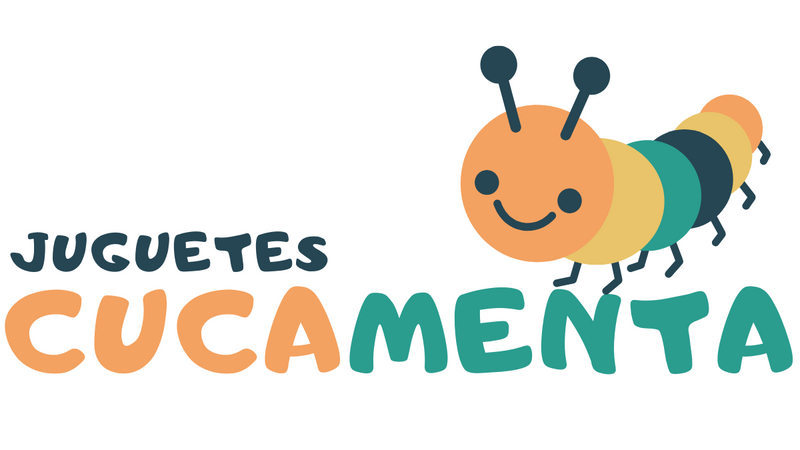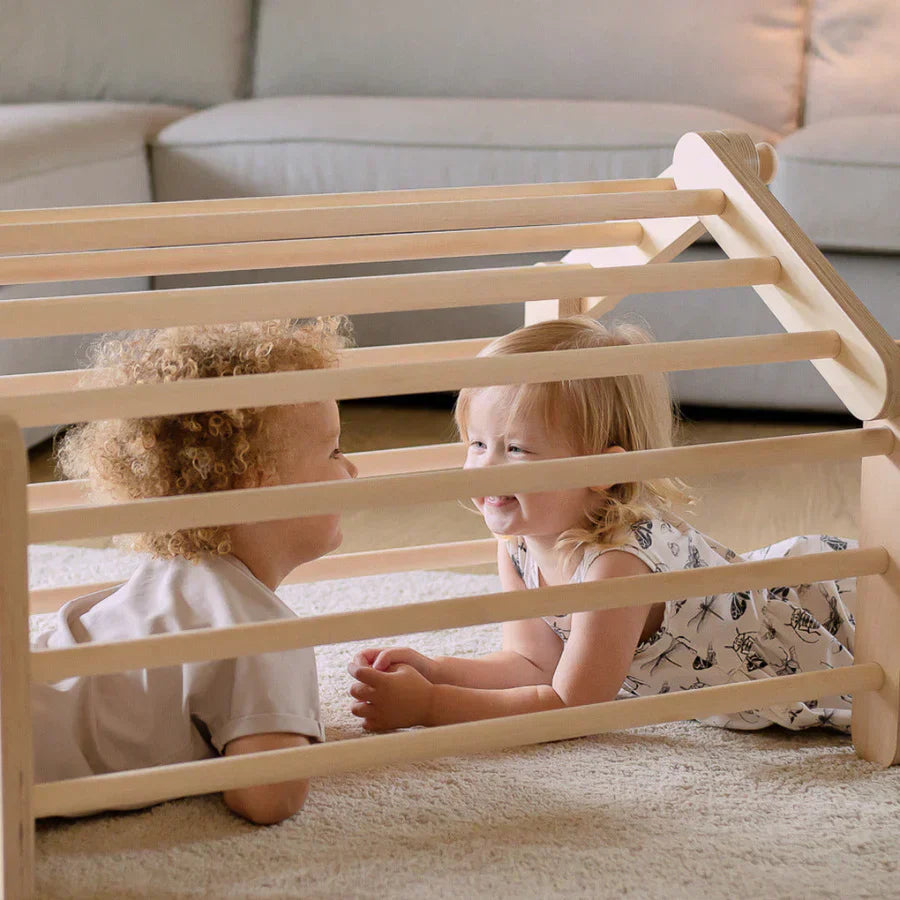Walking, dancing, crawling, climbing, running, grabbing... the list of movements a baby gradually learns throughout their first months and years of development is almost endless. Families and schools can help them develop creativity, agility, and mobility with toys specifically designed for this purpose, such as the Pikler convertible triangle with ramp available at Cucamenta, one of the most prized treasures in our catalog.
The Pikler triangle was created by Hungarian pediatrician Emmi Pikler, who dedicated her life to studying child development and promoting respectful parenting. She believed individualized attention, human contact, and free movement were essential for each baby to feel loved and secure , and to be able to explore the world and discover their own body and capabilities.
Pilker pedagogy is an educational method that fosters freedom and respect for the autonomy of children throughout the learning process , with the goal of helping them become independent and confident. Its basic principles are:
- Creating emotional bonds and secure attachment.
- Trust and good communication to generate strong bonds.
- Free play in a safe space.
- Freedom of movement - the pedagogy excludes furniture such as high chairs or cribs - and encourages children to explore movement naturally and at their own pace.
- Stable and fixed environment to generate security in the child.
"If we give children the space and opportunities to move freely, they will do so with the same beauty and grace as animals: with agility, simplicity, confidence, and naturalness," is one of the educator's most famous quotes. This toy can help you achieve just that.
What is the Pikler triangle?

In a nutshell, the Pikler triangle is a wooden climbing structure designed to promote gross motor skills and physical development in children. The Pikler triangle with ramp, MOPITRI, never goes out of style and offers a safe alternative for children to engage in physical activity while developing their decision-making skills. It can be transformed into many shapes to keep your child entertained for years to come.
These are the main benefits of the Pikler triangle :
- It has a profound impact on the development of gross motor skills : it helps children perfect their coordination, engage multiple muscle groups, foster a harmonious connection between limbs, and plan movements. With the Pikler triangle, they learn to crawl, not be afraid of heights, and climb.
- Promotes physical activity : encourages active entertainment, working on flexibility, strengthening the body and improving balance while exploring their environment with curiosity.
- It improves spatial awareness , helping them to calculate distance and understand the nuances of the spatial dimensions around them, as well as the position of their limbs in relation to the structure.
- It gives them confidence and independence , making it easier to overcome milestones and obstacles, fostering a positive self-image and facing challenges with optimism.
- It contributes to cognitive development , improving problem-solving skills and understanding cause and effect, focusing on tasks, and memorizing movement sequences. It also develops muscle memory and internalizes the spatial layout of the climbing structure.
- It fosters emotional bonding with parents, creating a safe space for communication and emotional connection. Through play, families can understand their children's personalities, preferences, and developmental milestones.
Ultimately, this toy encourages a holistic approach to learning , one that recognizes the inseparable connection between cognitive skill and physical action. It's completely safe: made of high-quality wood and free of plastic, the rungs are spaced to accommodate children's hands and feet safely, minimizing the risk of slips or falls. The angles and proportions are meticulously calculated to accommodate their natural movements.
“ We will never take control of a child's play, nor will we expect them to play the way we imagine they should. We observe whether they want to play, and if so, how they want to play. What can the child do with the toy and what do they want to do with it? Every child can play differently with the same toy. Sometimes the differences are small, but essential. The key is for the child to discover for themselves as much as they can. We will allow them to experiment individually and according to their development. We will not rush them. We will not encourage them to do things they are not ready for. We will not praise their successes excessively,” the educator recommends.
To get the most out of the Pikler triangle, change the shape of the climbing triangle every day—you can make it lower or sharper, in the shape of a house or flat, or with two small triangles—adapt the challenges to the developmental stage, and incorporate the sliding ramp for extra fun.
We conclude the article with another brilliant quote from Emmi Pikler. "In children, even babies, there is by nature an inexhaustible and growing interest in the world and in themselves. There is no need to 'entertain' a baby. They can play for hours, days, even months with whatever objects they find."


0 comments